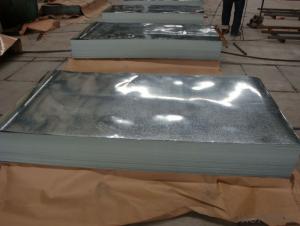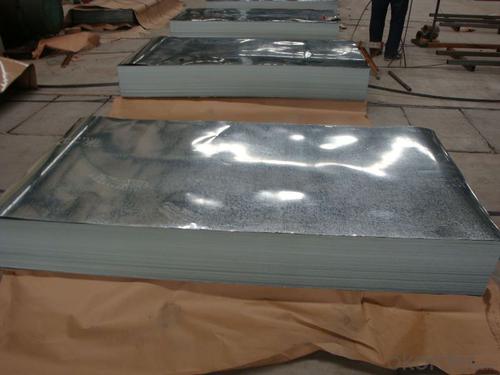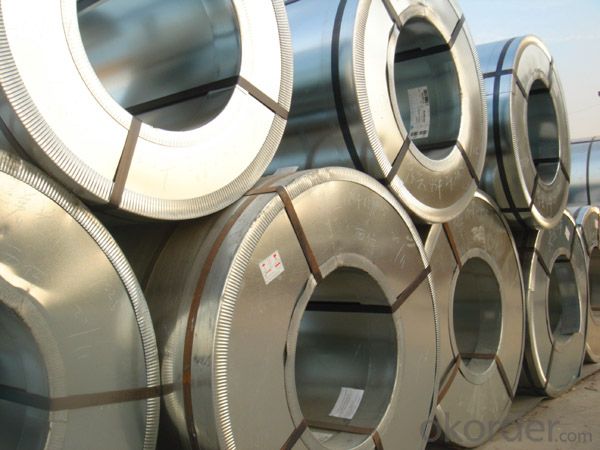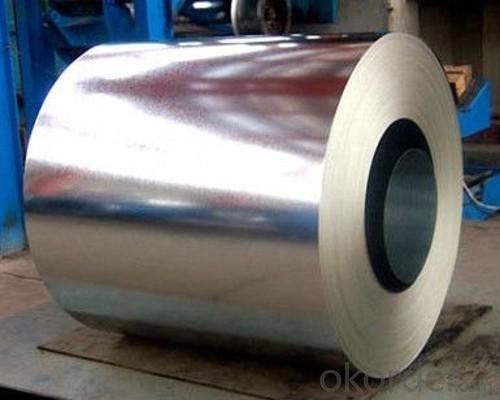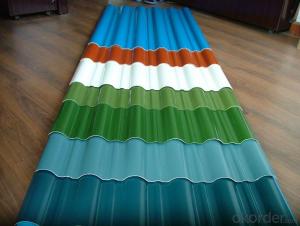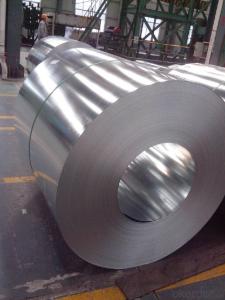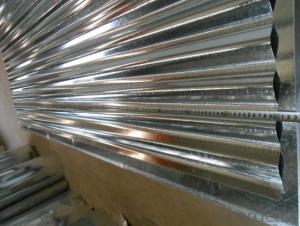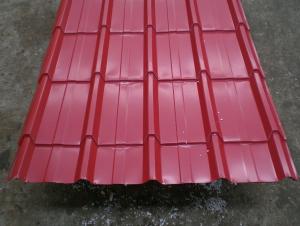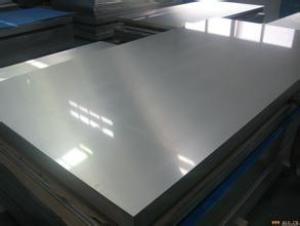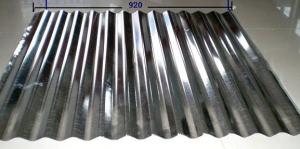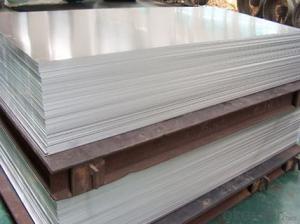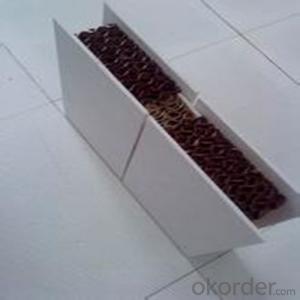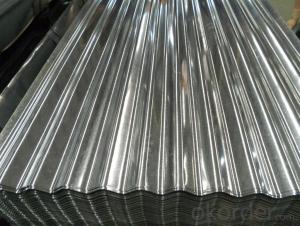Galvanized Sheet Galvanized Sheet Metal Prices Galvanized Iron Sheets Price
- Loading Port:
- Shanghai
- Payment Terms:
- TT OR LC
- Min Order Qty:
- 500 m.t.
- Supply Capability:
- 10000 m.t./month
OKorder Service Pledge
OKorder Financial Service
You Might Also Like
deformed steel bar grade 40
material: HRB400, BS4449 GR460B
size: 8-36mmx12m.
short delivery time by bulk or container
deformed steel bar grade 40
material: HRB400, BS4449 GR460B
size: 8-36mmx12m.
short delivery time with bulk or container
packing: Mill standard export packing in bundles/coil, around 2tons/bundle.
country of Origin: China
delivery Time: Within a 35 days
Shipment: by bulk vessel or by container
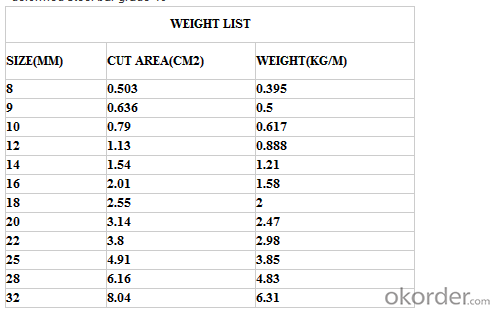
Leading goods:
section steel:angles,channels,I-beam,H-beam;
coils:cold/hot rolled coils,PPGI,galvanized coils,plate,checkered plate,cutting steel plate,steel strip;
wire rod:steel wire,deformed wire,bar;
pipe:seamless pipe,rectangular pipe,welded pipe,spiral welded pipe,pipe fittings;
stainless steel:steel sheets,stainless steel strips,stainless bar,stainless tube;
special:weathering steel,shipbuilding steel;
construction steel:C-channel,Z-channel,T-bar,high-speed divider plate,corrugated steel plate,steel grating.
Advantage:
We are the spot supplier, Six huge warehouses which can hold 20,000 MT goods.
It makes the cost lower than others,we can provide the competitive price for you.
Delivery time:
Normal sizes can be provided in 7days, the others should be ready in 30---45 days.
Further treatment:
We can offer cutting,painting,drilling holes,bending,threading, welding,galvanization,packing etc.
Security interest:
We have already passed the ISO9001, BV and SGS authentication which makes the quality secured.
If you have the interest in any of the products we can provided, pls don't hesitate to connect with me. Looking forward to cooperate with you.

FAQ of Steel Deformed Bar
1. More than 10 years experience in this industry
2. 100,000 tons exporting per month
3. Professional foreign trade tea
4. OEM&ODM capacity
5. High quality assured & competitive price
6. Try our best to meet your needs & save your budget
7. Very popular in Southeast Asia, Africa, Mid-East and South America etc.
8. VIP membership system, first time customers and long-term cooperation customers can get extra discount on some products.
- Q: Can steel sheets be used for solar panel manufacturing?
- Solar panel manufacturing can utilize steel sheets. Steel is a versatile material widely used in various industries, including renewable energy. It offers several advantages for manufacturing solar panels. To begin with, steel is a strong and durable material that provides structural integrity to solar panels. It can withstand harsh weather conditions and protect the delicate photovoltaic (PV) cells within the panels. This durability ensures longer lifespan for the panels, reducing maintenance and replacement costs. Additionally, steel sheets can be easily shaped and sized to meet the specific requirements of solar panel designs. This flexibility in manufacturing allows for the creation of efficient and visually appealing solar panels. Moreover, steel is a cost-effective option compared to alternatives such as aluminum or glass. It is readily available and has relatively low production costs, making it an economical choice for solar panel manufacturing. Nevertheless, it is important to note that steel sheets used in solar panel manufacturing are typically coated with protective layers to enhance their resistance to corrosion and prevent any negative impact on the PV cells. These coatings safeguard the steel from environmental factors like moisture or chemicals, ensuring the longevity and performance of the solar panels. In conclusion, steel sheets are indeed suitable for solar panel manufacturing due to their durability, versatility, cost-effectiveness, and ease of fabrication. When appropriately coated, steel provides a dependable and efficient solution for producing solar panels, thereby contributing to the growth of the renewable energy sector.
- Q: Can steel sheets be used for making HVAC ducts?
- Yes, steel sheets can be used for making HVAC (Heating, Ventilation, and Air Conditioning) ducts. Steel is a commonly used material for HVAC duct fabrication due to its strength, durability, and fire resistance properties. Steel sheets are typically cut, formed, and welded together to create ductwork that can efficiently transport air throughout a building. The use of steel sheets ensures that the ducts can withstand the high temperatures and pressures associated with HVAC systems while maintaining structural integrity. Additionally, steel ducts are less prone to damage from pests, moisture, and mold growth compared to other materials. Overall, steel sheets are a suitable choice for making HVAC ducts due to their reliability and ability to meet the necessary performance requirements.
- Q: What is the process of etching or engraving on steel sheets?
- The process of etching or engraving on steel sheets involves several steps to create intricate designs or patterns on the surface of the metal. Here is a general overview of the process: 1. Design and Preparation: The first step is to create or choose a design that will be etched or engraved onto the steel sheet. This design can be hand-drawn or created using computer software. Once the design is finalized, it is transferred onto a film or stencil. 2. Cleaning the Steel Sheet: Before beginning the etching or engraving process, the steel sheet needs to be thoroughly cleaned to remove any dirt, grease, or oxidation. This is typically done using a solvent or a degreasing agent to ensure a clean and smooth surface for the etching or engraving. 3. Applying the Stencil: The stencil or film with the desired design is carefully applied to the steel sheet. This stencil acts as a protective barrier, preventing the etching or engraving solution from affecting the areas that should not be etched or engraved. 4. Etching or Engraving Solution: A specialized etching or engraving solution is selected based on the desired effect and the type of steel being worked on. This solution is applied to the exposed areas of the steel sheet, where the stencil has not been applied. The etching or engraving solution chemically reacts with the steel, removing a thin layer of metal to create the desired design or pattern. 5. Control and Timing: The etching or engraving process requires careful control of factors such as temperature, time, and concentration of the solution. These parameters can affect the depth and quality of the etching or engraving, so it is crucial to closely monitor and adjust them as needed. 6. Rinsing and Cleaning: Once the desired etching or engraving depth is achieved, the steel sheet is thoroughly rinsed to remove any remaining solution. This step is essential to stop the chemical reaction and prevent any further etching or engraving. 7. Finishing Touches: After rinsing, the steel sheet may undergo additional steps to enhance the appearance of the etched or engraved design. This can include polishing, buffing, or applying protective coatings to improve durability and visual appeal. Overall, the process of etching or engraving on steel sheets requires precision, attention to detail, and the use of specialized tools and chemicals. It is a skillful art form that can produce stunning and intricate designs on steel surfaces.
- Q: What are the different thicknesses available for steel sheets?
- Steel sheets are available in various thicknesses, ranging from thin gauges of around 0.4mm to thick gauges of up to 25mm or more, depending on the specific application requirements.
- Q: What are the potential drawbacks of using steel sheets?
- There are several potential drawbacks of using steel sheets in various applications. Firstly, steel sheets are prone to corrosion. If not properly protected or coated, steel sheets can rust when exposed to moisture or certain environmental conditions. This can significantly affect their structural integrity and lifespan. Secondly, steel sheets can be heavy and difficult to handle. This can pose challenges during transportation, installation, and maintenance. The weight of steel sheets may also limit their use in certain applications where weight restrictions are in place. Additionally, steel sheets can be expensive compared to other materials. The cost of steel production, processing, and customization can be higher than alternative materials, making steel sheets less financially viable in some projects. Another potential drawback of steel sheets is their limited design flexibility. Steel sheets are often manufactured in standard sizes and shapes, which may not always meet specific design requirements. Modifying steel sheets can be time-consuming and costly, limiting their adaptability for unique or complex projects. Moreover, steel sheets have a relatively high thermal conductivity. This means that they can transfer heat quickly, making them less effective in providing insulation. In applications where thermal insulation is crucial, alternative materials may be more suitable. Lastly, steel sheets are not environmentally friendly. The production of steel involves significant energy consumption and carbon emissions. Additionally, the extraction and mining of raw materials used in steel production can have detrimental effects on the environment. Overall, while steel sheets have numerous advantages such as strength and durability, it is important to consider these potential drawbacks when choosing the appropriate material for a specific application.
- Q: How do steel sheets perform in fire-rated applications?
- Steel sheets perform exceptionally well in fire-rated applications. Due to their high melting point and excellent heat resistance, they offer superior protection against fire and help to contain its spread. Steel sheets are widely used in fire-rated walls, doors, and ceilings, as they maintain their structural integrity even at extremely high temperatures. Additionally, they contribute to fire safety by limiting the release of toxic gases and smoke, making them a reliable choice for fire protection in various industries and buildings.
- Q: Are steel sheets suitable for railway infrastructure?
- Yes, steel sheets are suitable for railway infrastructure. Steel is a widely used material in the construction of railway infrastructure due to its strength, durability, and versatility. One of the main advantages of using steel sheets for railway infrastructure is their high strength-to-weight ratio. Steel is known for its exceptional strength, allowing it to withstand heavy loads and provide long-lasting support to railway tracks, bridges, and other structures. This strength is crucial in ensuring the safety and stability of the railway system, especially when dealing with the immense weight and impact forces exerted by trains. Additionally, steel sheets offer excellent durability and resistance to wear and tear. Railway infrastructure is subjected to constant stress, including vibrations, impacts, and extreme weather conditions. Steel's inherent properties make it highly resilient to these factors, minimizing the need for frequent repairs and maintenance. This durability translates into significant cost savings in the long run, as steel structures have a longer lifespan compared to other materials. Moreover, steel sheets are highly versatile and can be easily fabricated into various shapes and sizes to meet specific railway infrastructure requirements. This flexibility allows for the efficient construction of rails, sleepers, bridges, and other components needed for a functional and safe railway system. Steel's adaptability also enables easy modifications and expansions to the infrastructure as needed, ensuring compatibility with evolving transportation needs. In conclusion, steel sheets are well-suited for railway infrastructure due to their strength, durability, and versatility. Their high strength-to-weight ratio, resistance to wear and tear, and ease of fabrication make them an ideal choice for constructing and maintaining railway tracks, bridges, and other structures. The use of steel in railway infrastructure ensures the safety, efficiency, and longevity of the railway system.
- Q: Can steel sheets be cut to custom sizes?
- Yes, steel sheets can be cut to custom sizes.
- Q: Are steel sheets suitable for architectural cladding?
- Yes, steel sheets are suitable for architectural cladding. Steel cladding offers durability, strength, and versatility in design, making it a popular choice for architects. It can be easily formed into different shapes and sizes, providing flexibility in creating unique building facades. Additionally, steel cladding is resistant to weather conditions, fire, and pests, making it a long-lasting and low-maintenance option for architectural applications.
- Q: What are the different coating options for steel sheets (powder coating, paint, etc.)?
- Steel sheets have a variety of coating options that each have their own unique benefits and characteristics. Some commonly used coating options include: 1. Powder coating: Dry powder coating material is applied to the steel sheet and then cured under heat to create a protective layer. This coating offers excellent durability, corrosion resistance, and aesthetic appeal. It is also environmentally friendly as it does not contain solvents or VOCs. 2. Paint: Liquid paint is applied to the surface of the steel sheet and dries to form a protective layer. Paint coatings come in a wide range of colors and finishes, making them suitable for different applications. However, they may require regular maintenance and can chip or peel. 3. Galvanizing: Galvanizing is a popular method for coating steel sheets, particularly when corrosion resistance is important. A layer of zinc is applied to the steel surface through a hot-dip process, creating a protective barrier against corrosion and rust. Galvanized coatings are highly durable and long-lasting. 4. Epoxy coatings: Epoxy coatings are known for their excellent chemical resistance and adhesion properties. They provide a tough and durable finish that protects steel sheets from corrosion, chemicals, and abrasion. Epoxy coatings are commonly used in industrial settings with harsh conditions. 5. Chromate conversion coatings: Chromate conversion coatings are applied to steel sheets to enhance their corrosion resistance and improve paint adhesion. These coatings are usually thin and translucent, giving a clear or slightly yellowish appearance. They are often used as a pre-treatment before painting or powder coating. 6. Ceramic coatings: Ceramic coatings offer exceptional heat resistance and durability. They are commonly used in high-temperature applications such as exhaust systems or industrial ovens. Ceramic coatings can withstand extreme temperatures, corrosion, and abrasion, making them ideal for demanding environments. There are many other coating options available for steel sheets. The choice of coating will depend on factors such as the intended application, desired appearance, environmental conditions, and budget. Seeking advice from a coating specialist or manufacturer can help determine the most suitable option for specific requirements.
Send your message to us
Galvanized Sheet Galvanized Sheet Metal Prices Galvanized Iron Sheets Price
- Loading Port:
- Shanghai
- Payment Terms:
- TT OR LC
- Min Order Qty:
- 500 m.t.
- Supply Capability:
- 10000 m.t./month
OKorder Service Pledge
OKorder Financial Service
Similar products
Hot products
Hot Searches
Related keywords
